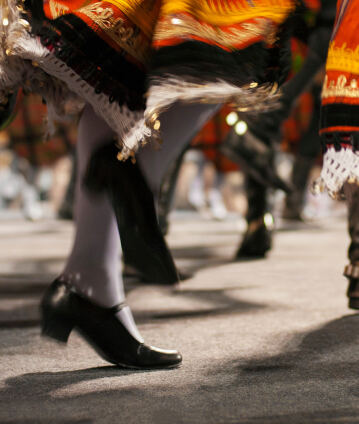Light music and favourite works with the Berliner Philharmoniker

In concerts by large symphony orchestras, it is often serious works that dominate. But striking a lighter tone is also an art in itself, and composers such as Mozart, Mendelssohn, Tchaikovsky and Gershwin were masters of this. Soon after the orchestra was founded, the Berliner Philharmoniker initiated a concert series of popular music, a tradition which can still be seen today, such as in the Waldbühne and New Year’s Eve Concerts. This playlist features a selection of particularly popular pieces ranging from the Baroque to the present day.
The distinction between serious and light music, which has long been strictly maintained in Germany, has, in truth, always been flexible. Wolfgang Amadeus Mozart, who like Felix Mendelssohn was skilled in making the complicated sound very simple, wrote serenades and divertimentos, Antonín Dvořák his Slavonic Dances, and the Hungarian Dances are among Johannes Brahms’s most popular works – a composer who also had a deep reverence for the Viennese waltz king Johann Strauss (as the avant-garde Arnold Schoenberg later had for George Gershwin). Composers as sophisticated as Robert Schumann, Maurice Ravel and Sergei Prokofiev created some of their most beautiful works for the unspoiled taste of children.
In countries outside the German-speaking world, there is traditionally less fear of contact: in France, there was a very conscious decision to contrast the German “profundity”. This is as true of Maurice Ravel as it is of Francis Poulenc and Darius Milhaud who incorporated jazz rhythms and sounds into many of their works. In Russian music, the melodic inventiveness of Pyotr Tchaikovsky and Sergei Rachmaninov and the art of vivid characterisation of Sergei Prokofiev and Igor Stravinsky are guaranteed to be popular with a wide audience. Dmitri Shostakovich ultimately mastered the tragic as well as a light tone. And, of course, America must also be mentioned in this context. Composers from Charles Ives to John Adams have immortalised everyday sounds, the noises of the big city, and irresistible rhythms and melodies in their works. Leonard Bernstein, both as a composer and conductor, possessed a unique talent for combining the demanding with the accessible and exciting.
The tradition of the “serious” symphonic evening is a relatively new one. Ludwig van Beethoven’s concerts were a potpourri in which individual opera arias could be heard alongside the premiere of a symphony. In between, the composer sat at the piano to perform one of his famous improvisations. The Berliner Philharmoniker have also always played for very broad audiences: since their foundation, they have cultivated the tradition of “popular concerts” in a regular series. These continue today in the form of the orchestra’s performances at the Waldbühne and the New Year’s Eve Concerts which have long since become an indispensable feature of the musical calendar.
Our recommendations
- Meet Kirill Petrenko and the Berliner Philharmoniker!
- Richard Strauss and his tone poems
- Musical Sunrises: “Let there be light!”
- “Unanswered Questions”: Musical Modernism between 1910 and 1920
- From Bohemia and Moravia: Czech music with the Berliner Philharmoniker
- Seeking and confession: Identities in Classical music